For my gluten free Thai salmon fish cakes recipe. I am using Salmon to give a very distinctive taste to the fish cakes. Plus snake beans, spring onions and I marinated the fish cakes with a spice paste. Then I pan fried these Thai salmon fish cakes to perfection. I have also included crunchy salmon fish skin pieces for the fish cakes. Do not throw away the salmon skin as it has the most amount of omega-3 fatty acids. This Thai salmon fish cakes recipe is not only gluten free. But also low carb, dairy free, soy free, nut free and egg free.
You may also like my other gluten free fish cakes recipes:
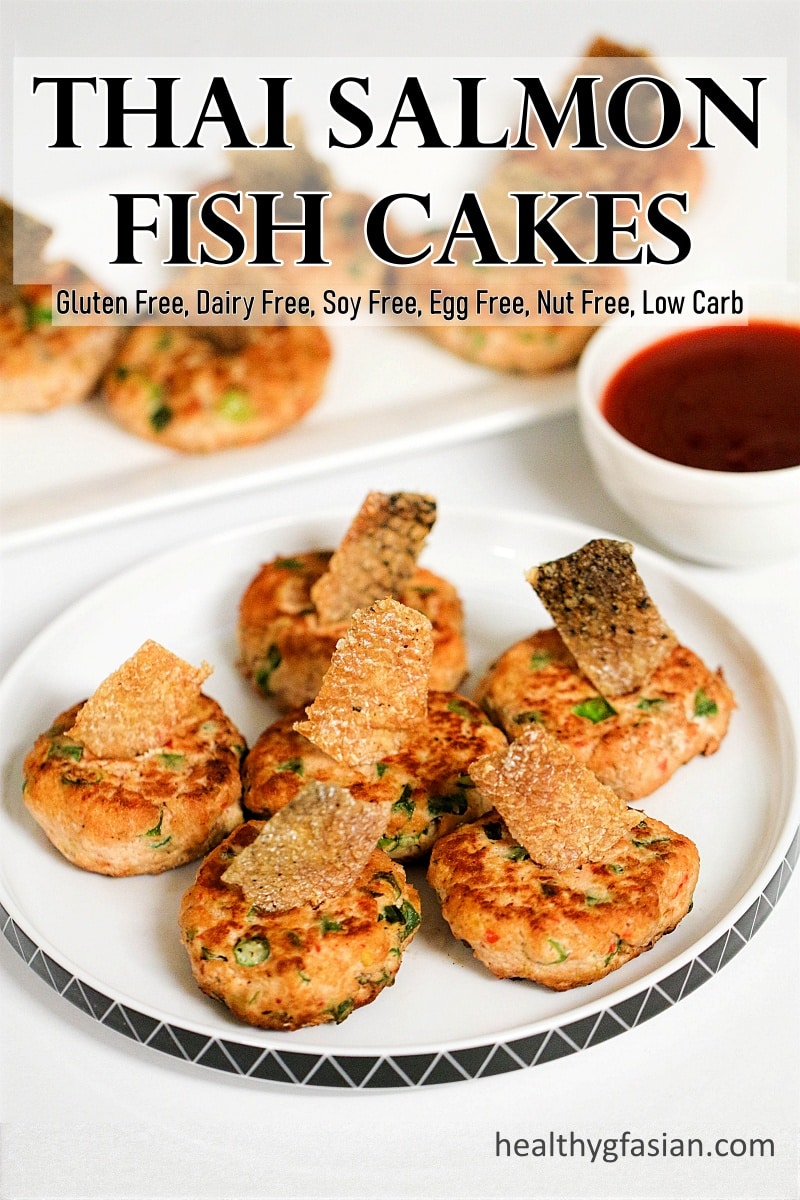
Characteristics of Thai Fish Cakes
They invented fish cakes in the 19th century in England to utilise leftover fish and mashed potato. Subsequently coated with bread crumbs or batter then fried. In Europe, they customarily make fish cakes with cod. While in South East Asia, they often use salmon, prawns, crab meat and white fish fillets to make fish cakes.
Thai fish cakes are common street food in Thailand. Likewise, they are very tasty and full of flavour. In comparison to Western style fish cakes due to the aromatic herbs and spices used in making them. As they do not batter Thai fish cakes with bread crumbs thus allowing more flavour to get through. Besides, they more commonly make fish cakes with mashed filleted fish. As well as finely sliced snake (yardlong) beans or often called Chinese long beans. Plus fish sauce, red curry paste and herbs like kaffir lime leaves and eggs as binding agent. Then they deep fry the fish cakes and served them with sweet chilli sauce. Moreover, Thai fish cakes have developed into a really well-liked dish in the whole world.
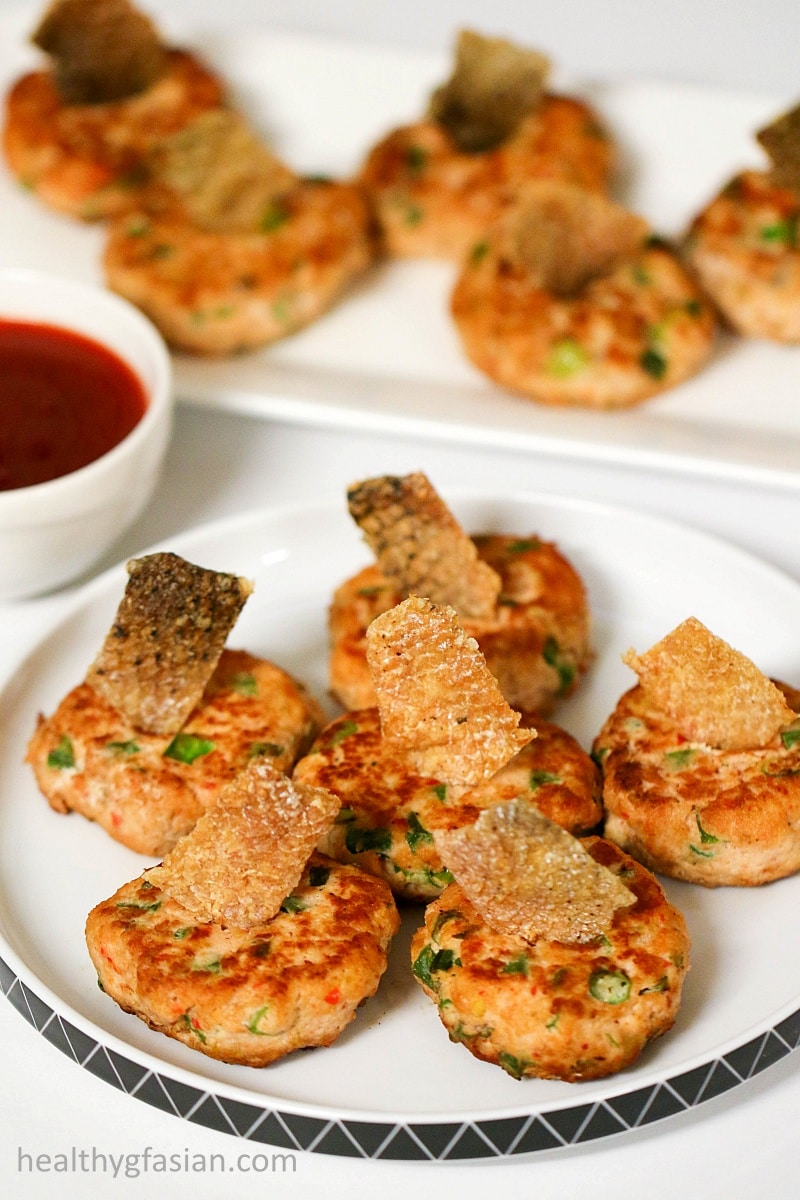
Interesting Life Cycle of Salmon
There are some interesting facts about the remarkable life cycle of salmon. Described as anadromous: born in freshwater. Spend most of their adult life at sea then return to their natal river to spawn. Salmon lay their eggs in rivers or fresh water streams. The eggs will hatch into alevin or sac fry. The alevin or sac fry retains its egg yolk for nutrients until fully absorbed. Then the alevin will rapidly develop into parr with vertical streaks as disguise. The parr will continue to stay in their natal stream for one to three years. Until they are ready for the ocean journey. Then they will turn into smolts, juvenile salmons, with bright silvery colour.
The smolts bodies will change and adapt themselves to live in saltwater. They will group together in large number. And swim out into the oceanic sea to feed and grow into adult salmons. Adult salmons will spend around one to four years at sea. Once sexually matured, they change to a darker colour from silvery blue colour. They will then return predominantly to their native streams to spawn. Travelling a treacherous journey of more than 1,400 km from the Pacific Ocean. They are kelts at this stage. Whereby, the mortality of the mature adults salmon are very high, they usually die witin weeks of spawning. Read more about the fascinating life cycle of salmon here.
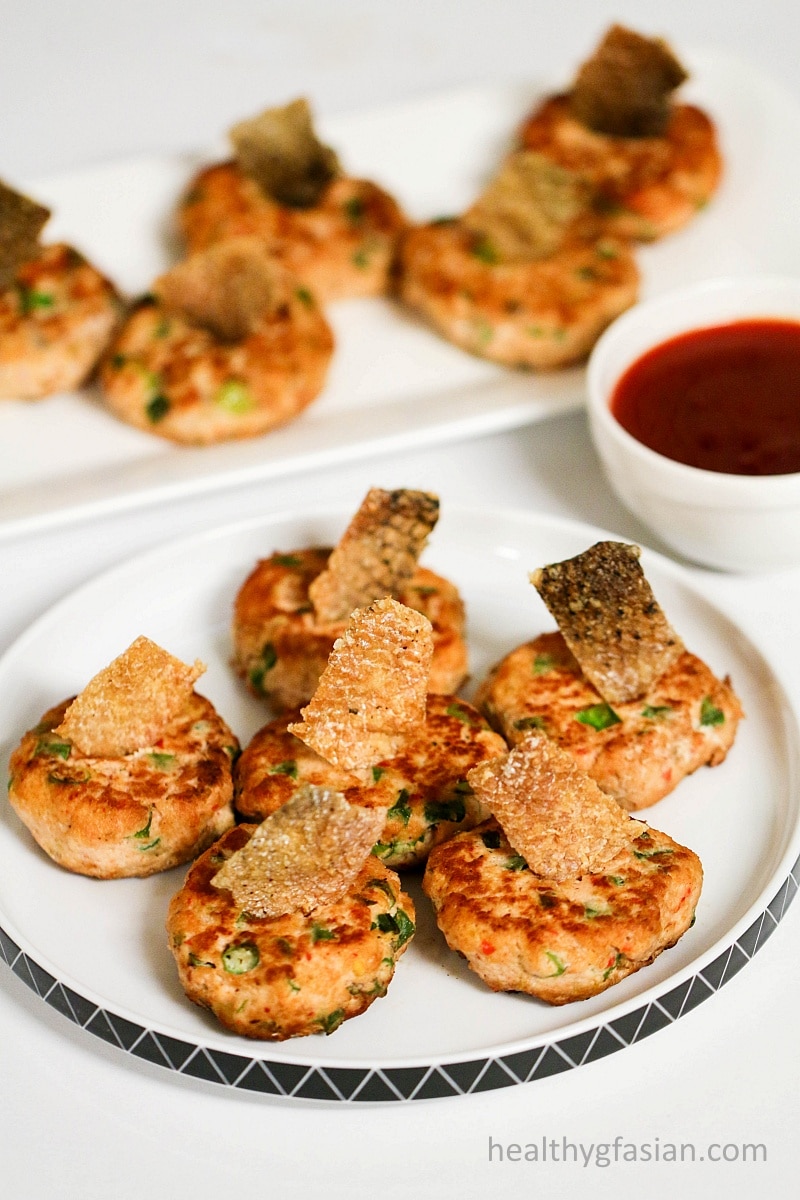
Sustainable Fishing in Australia
“Fishing is sustainable when it can be conducted over the long term at an acceptable level of biological and economic productivity without leading to ecological changes that foreclose options for future generations”.
The Australian Government Definition of Sustainable Fishing
The Australian government definition of sustainable fish means sustainability of wild caught seafood. Principally means purchased and consumed commercial seafood. Salmons are very low in mercury due to their smaller size and they consume plants. Likewise, it is best to eat wild or organically farmed fish. In order to prevent any added pesticides, fungicides and excessive omega-6 consumption (cause of inflammation) found in standard farmed fish.
Furthermore, it is also common practice for salmon farmers to use colour dye called canthaxanthin. An artificial colouring in the farmed fish food . And the colour will transfer to the flesh to make the farmed pale looking fish look pinkish-orange. Besides, most consumers are not aware of this as the colour dye. Because it is not a requirement for them to disclose the colour dye on the food label.
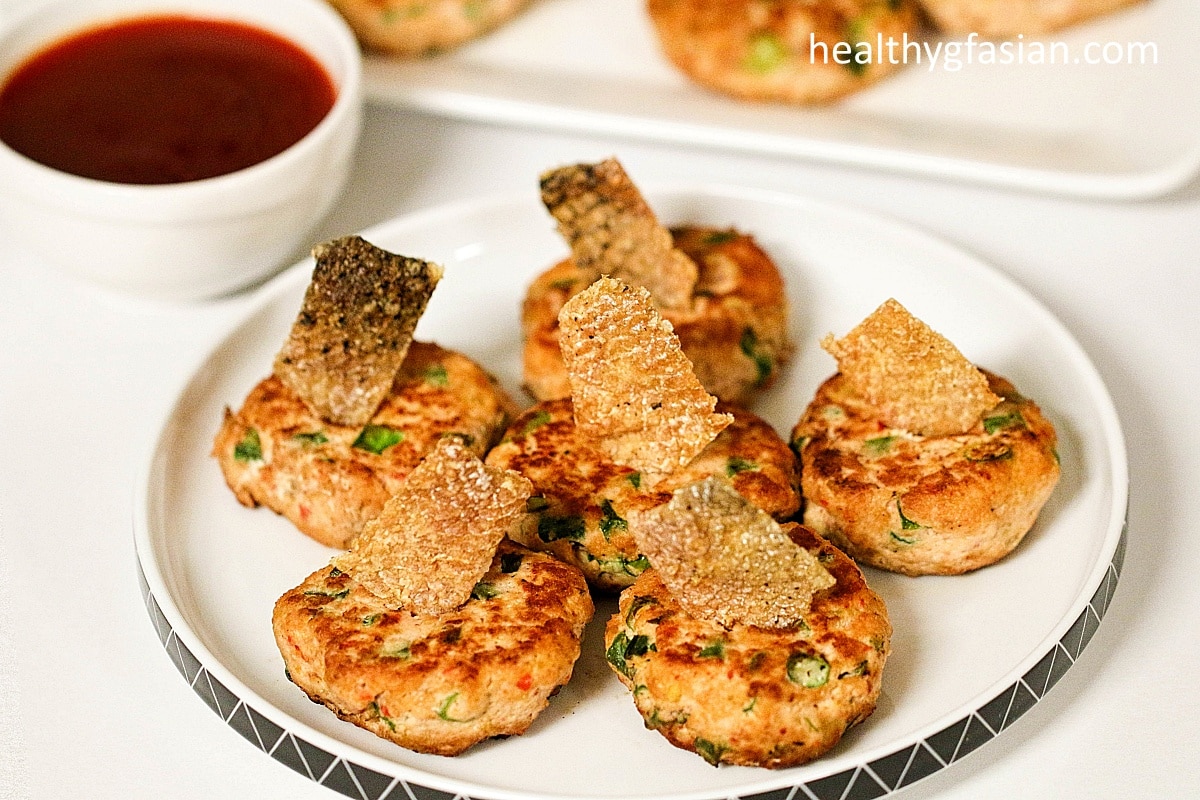
Nutritional Values of Salmon
Many people consider salmon as a nutritional phenomenon. As it is a sustainable source of omega-3 fatty acids, an essential fatty acids. They also consider salmon as a superfood not only because of its omega-3 fatty acids content. But also its excellent source of high quality lean protein with various vitamins and minerals. Salmons are not only rich in phosphorus and selenium. They are also rich in vitamins like A, B3 (niacin), B6 (pyridoxine), B12 and D. Salmons also has moderate amounts of iodine, choline, potassium, vitamin B5 (pantothenic acid) and biotin (vitamin H). The utmost valuable omega-3 fatty acids occur organically in oily fish as eicosapentanoic acid (EPA) and docosahexanoic acid (DHA).
Health Benefits of Salmon
On the whole, the many health benefits of consuming oily fish like salmon may include:
- Promote healthy brain and nerves functions;
- Reduce risks of cardiovascular diseases;
- Support healthy eye, skin and nails;
- Prevent joints inflammations;
- Help maintain insulin lever;
- Lower risks of several types of cancer like colon cancer, prostate cancer, and kidney cancer. As well as breasts cancer and lymph or blood cancers; and
- Decrease risks of many chronic illnesses like Alzheimer’s disease, diabetes, high blood pressure and macular degeneration. As well as depression, asthma, diabetes, rheumatoid arthritis and multiple sclerosis.
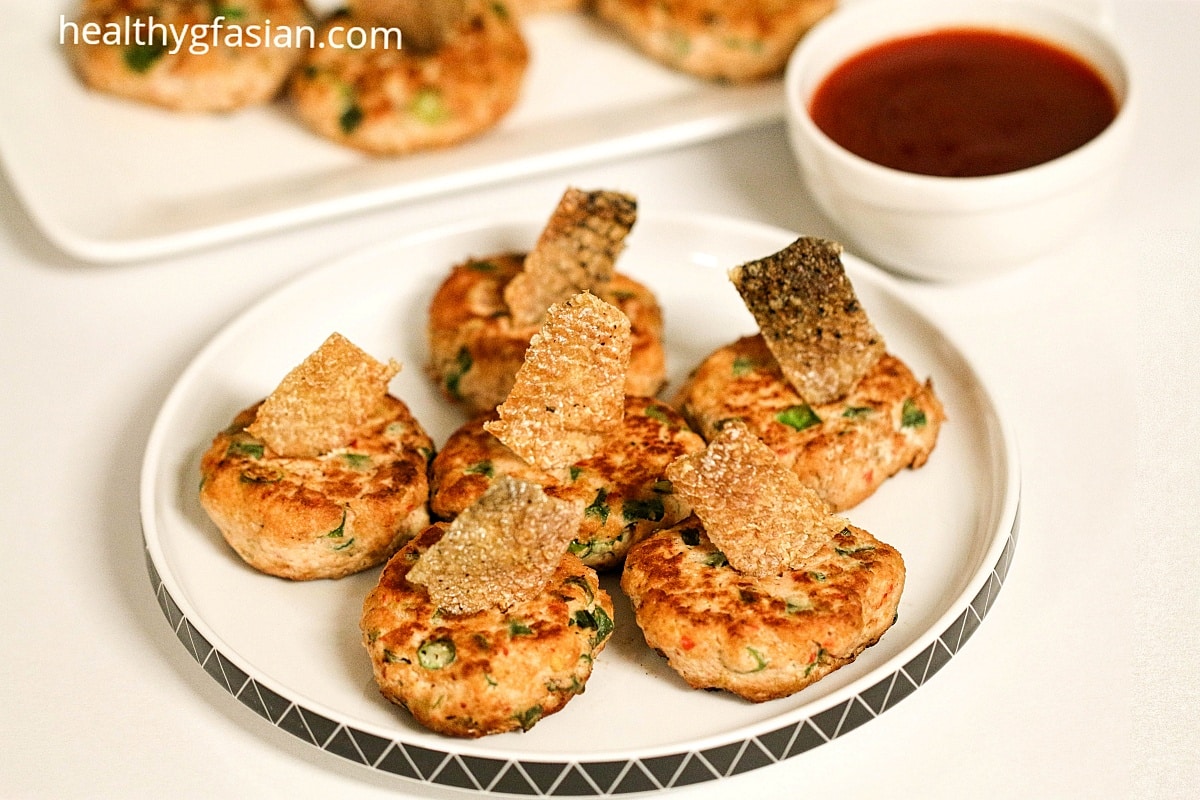
Thai Salmon Fish Cakes
Ingredients
- Rice bran oil for pan frying
- 1.2 kg salmon fish fillets tail part, scaled, skin removed (reserve skin) and cut into 2 inch pieces
- 3 spring onions thinly sliced
- 16 snake beans thinly sliced
- 1 teaspoon salt
- 1 teaspoon ground white pepper
- 2 tablespoons gluten free fish sauce
- some sweet chilli sauce as a dipping sauce
For the crunchy fish skin:
- Rice bran oil for pan frying
- 2 tablespoons corn starch (or potato starch) plus some for coating the fish skins
For the Spice Paste:
- 3 garlic cloves
- 1 small brown onion cut into wedges
- 3 long fresh red chillies deseeded and cut into 1 inch pieces
- 2 small fresh red chillies deseeded (optional)
- 5 kaffir lime leaves stems removed and leaves finely sliced
- 1 inch fresh galangal peeled and finely sliced
- 2 inch fresh ginger peeled and finely sliced
- 1 inch fresh turmeric peeled and finely sliced or 1 teaspoon ground turmeric
- 1 stem lemon grass white part only, finely sliced
- 2 teaspoon ground paprika
- 2 tablespoons extra virgin olive oil
Instructions
For the spice paste
- Add the ingredients for the spice paste into a food processor and blend until you get a smooth paste. Alternatively, you can use a mortar and pestle if preferred.
For preparing the crunchy fish skin:
- Scrap off any leftover fish meat on the back of the fish skin with a small knife.
- Dry the fish skin with kitchen paper towel. Marinade the fish skin with salt and lightly coat with corn starch or potato starch. Shake off any excess flour.
- Heat up a non-stick frying pan with some rice bran oil, pan fry the fish skin for 2 minutes on each side on low to medium heat or until fish skin is lightly brown and crunchy.
- Cut the crunchy fish skins into 32 small pieces (about 3 cm/1.2 inch) with a kitchen scissors and set aside.
For the fish cakes:
- Place the salmon fish fillets into a food processor, and blend until you get a thick puree fish paste.
- Transfer to a large mixing bowl and add in the spice paste, spring onions, snake beans, salt, ground white pepper, fish sauce and 2 tablespoons corn starch or potato starch. Combine and mix well.
- Using lightly greased hands roll the fish paste into 2 inch round balls and place them on a large baking tray and flatten the fish balls gently into patties with the palm of your hand.
- Heat up a non-stick frying pan, and pan fry the fish cakes for 2 minutes on each side or until fish cakes are lightly brown on medium heat. Fry the fish cakes in 4 batches. Change the oil when required and clean pan with kitchen paper towel.
- Place one cut crunchy fish skin into the top of each fish cake.
- Best served warm and with sweet chilli sauce.
Recommended Products


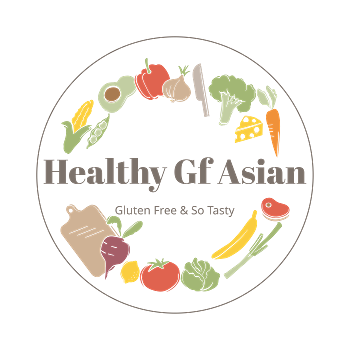
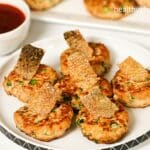





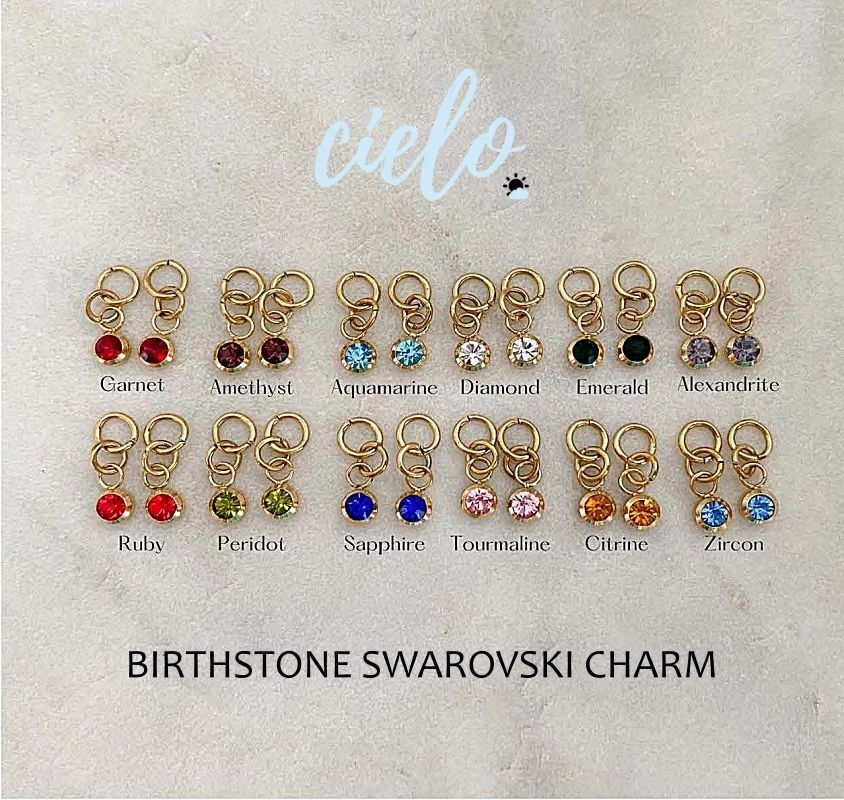
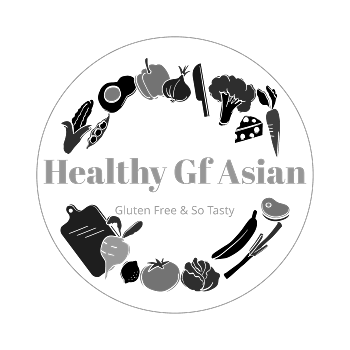
Hi! These look great. Can I substitute with canned salmon instead?
This recipe will not work well with canned salmon. Best to use fresh salmon instead.
This sounds lovely and really tasty. Thank you for sharing this.
Simon
Thank you for visiting, hope you enjoy these delicious fish cakes. 🙂 Happy New Year 2016!